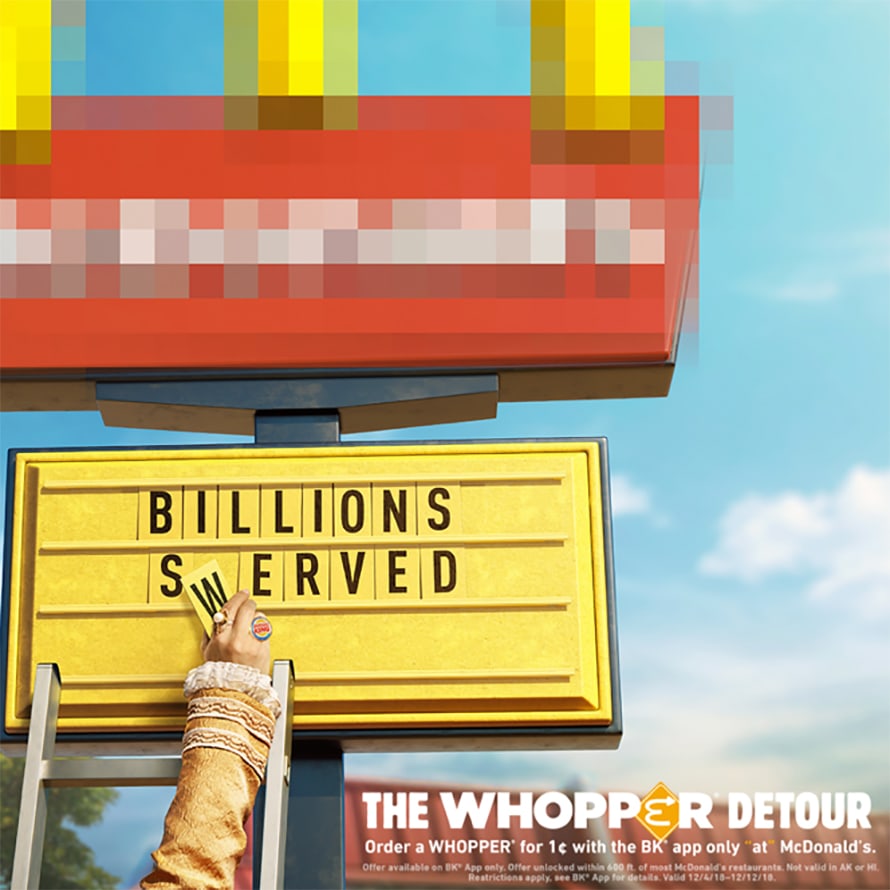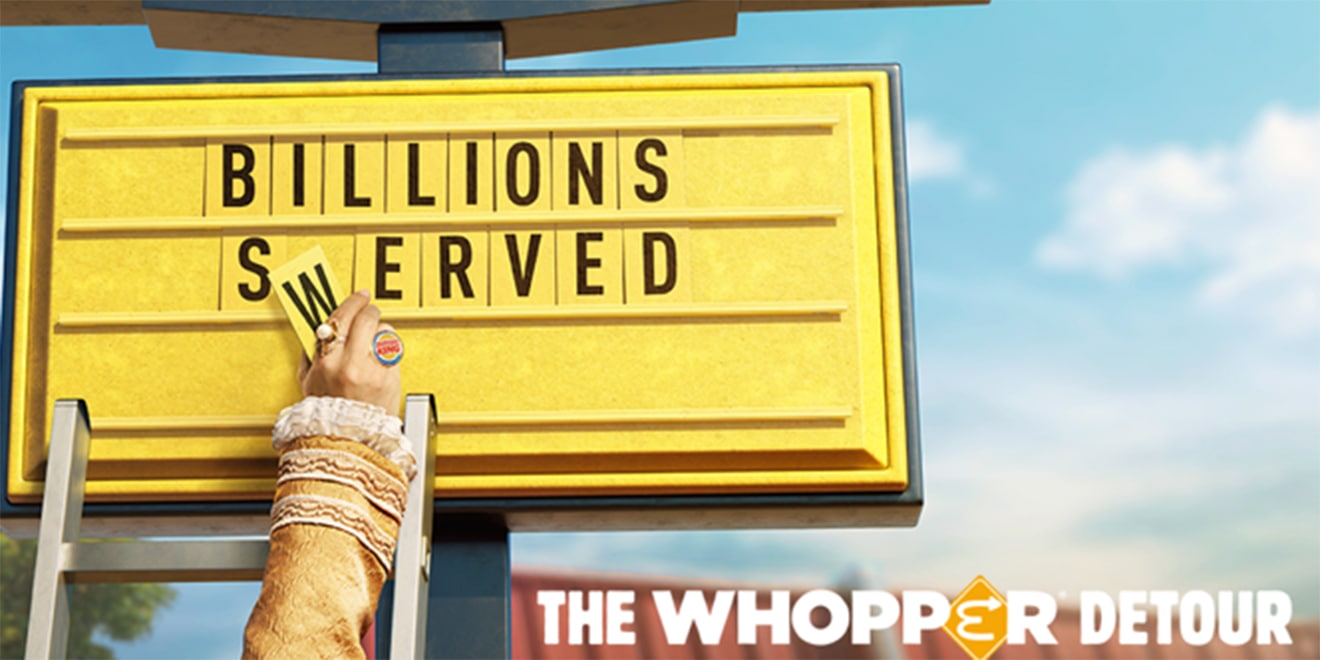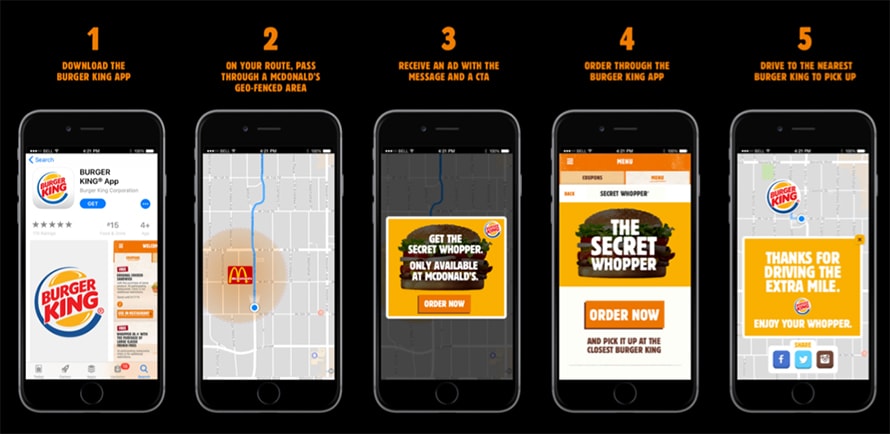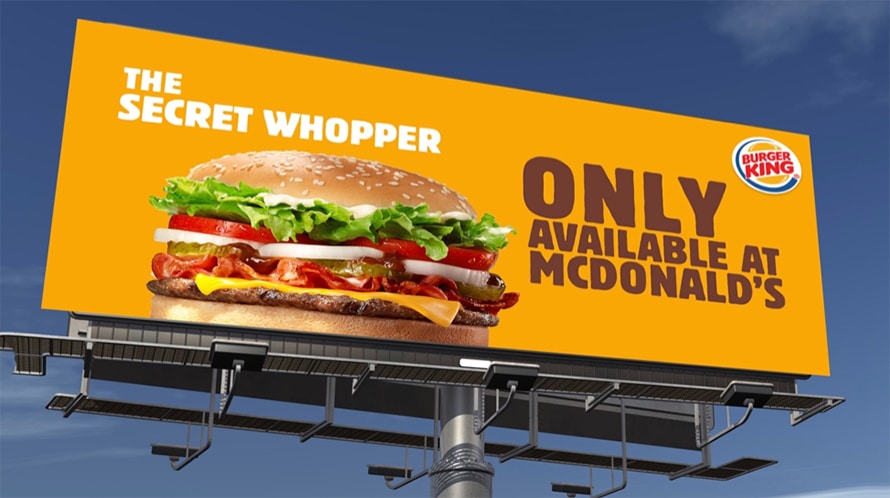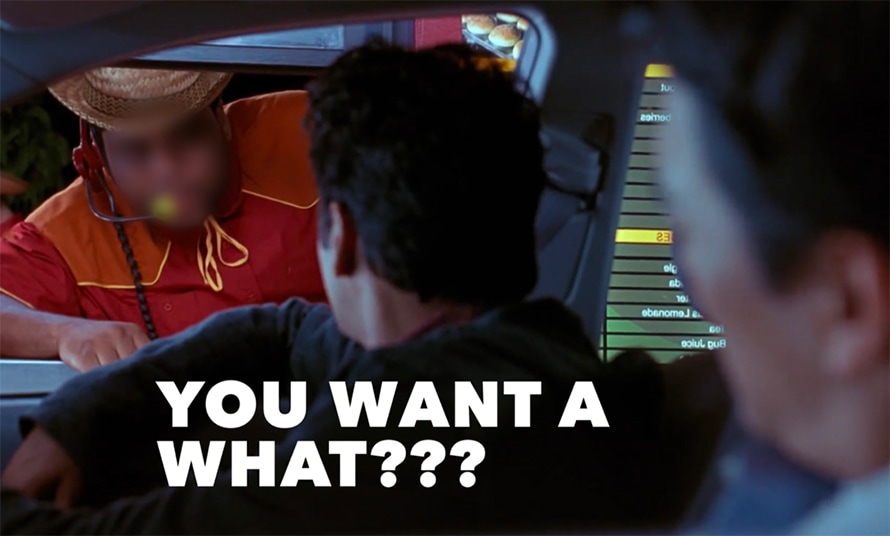I just read a great article from Burger Kings CMO Fernando Marchado who highlights the “Whopper Detour” campaign as being the campaign that started all that great Burger King creative work in the last years.
It’s an amazing Case Study and highlights what creative and successful marketing is today. And it shows how creativity can, and should, lead to business success.
He decribes how he sees the working relationships with his agencies today, how big ideas eat big-data and AI today, and how you need to fight for the ideas that make an impact. I couldn’t agree more with him.
The idea – “go to McDonalds and get a whopper for 1 penny”. Crazy? Brilliant!
Here the video which gives an overview of the campaign:
And if you want all the details, here’s the article Fernando Marchado wrote:
The Inside Story of the Burger King Campaign That Changed the Brand’s Entire Outlook on Marketing
Global CMO Fernando Machado shares the long road to Whopper Detour and its 37:1 ROI
In the past few years, Burger King built a reputation for itself. I believe our brand has mastered the art of using creativity to get people’s attention and build brand love.
McWhopper, Google Home of the Whopper and Burning Stores—among many others—were talked about everywhere, achieved billions of impressions, helped revamp the brand and were celebrated by our industry. Surely many of our blockbuster campaigns drove traffic (bringing people to restaurants) and sales, but the main focus of most of them was to “make the brand cool again.”
That’s why we see Whopper Detour as a defining moment for our brand. There is a clear “before” and an “after” when it comes to Whopper Detour. This campaign marks a turning point in our marketing and shows what we believe the future of great creativity might be—at least for us. A future where creativity is only used for (and celebrated for) responding to real, tangible business and brand goals.
This campaign was an idea that played with technology that is not necessarily new. Geofencing and mobile order and payment have been around for a while. It’s also not easy to convince people to download mobile apps from fast-food brands, especially burger chains. Many brands, including ourselves, couldn’t get people to download their apps even when giving products away. Yet Whopper Detour increased the BK mobile app sales by three times during the nine-day promotion and by two times ever since the promotion ended. This campaign catapulted BK’s app from a modest No. 686 in the app store to No. 1 across all categories, on both iOS and Android. It also drove the highest foot traffic—people coming to the restaurant—in 4.5 years.
So, the question is: How the hell did that happen?
Navigating to Whopper Detour
This is the story of a crazy idea that delivered real business results. Scratch that—insane business results. An idea that bent the rules of direct marketing, experiential and ecommerce/technology. An idea with scale and long-term impact.
This case not only shows the power of a big idea and what it takes to make something different happen but also the reason why our creative partners (aka advertising agencies) are so relevant. Big creative ideas eat programmatic, AI, trends and even a beautifully put together McKinsey presentation for lunch. And these days, people seem to forget that.
The big idea is where our industry should focus. We used the art of creativity to get people’s attention, build brand love and build our business today and tomorrow in scale. This was not a one-location, one-day stunt that gets people to talk about it—especially industry people—but is not linked to results. When we celebrate ideas like this one, we show that our advertising and creativity industries can indeed have a bright future and will be able to continue to have fun and make great business. And that’s the main reason we wrote this case study and are sharing it.
If you don’t have time to read this entire piece (which would be a shame!), at least watch this:
Whopper Detour is one of my favorite Burger King ideas ever.
It took us about a year to make. The idea came to us from FCB New York and evolved a lot over time—a characteristic we see in all of our best campaigns. It involved a large team to pull it off, including our technology team and key tech partners. We basically had to recode our newly updated mobile app with mobile order and payment to now also work well and consistently with geofencing.
In fact, to make this idea work, we had to geofence all our restaurants in the United States (more than 7,000) and all of the McDonald’s restaurants (more than 14,000). Plus, we had to make it reliable. Can you imagine the amount of time and pressure to make this happen? But it paid off. Big time.
We are investing a lot to improve our guest services at Burger King, and technology has a key role in this. After all, mobile has grown to be a vital player in the QSR space, poised to be a $38 billion industry by next year, per QSR Magazine. But mobile ordering and payment aren’t new to people, nor is geofencing.
Continue reading here:
